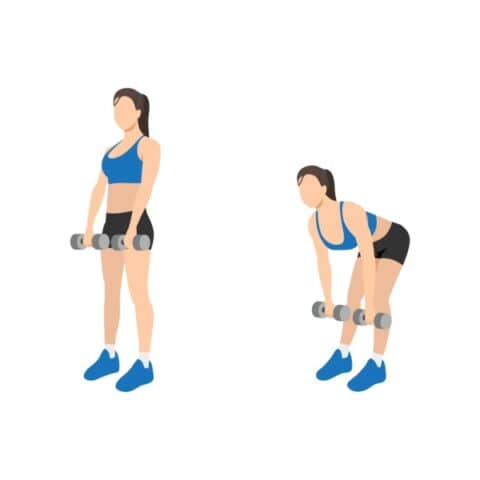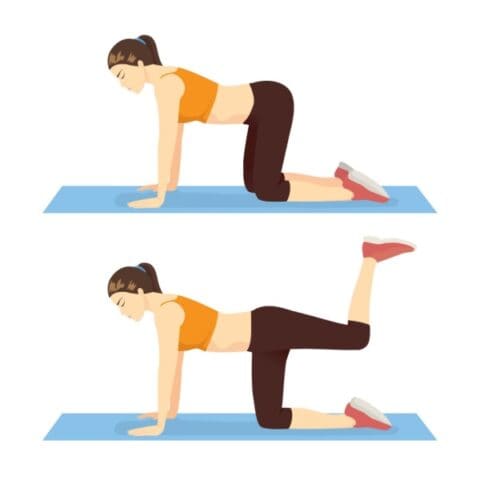This Dr. Axe content is medically reviewed or fact checked to ensure factually accurate information.
With strict editorial sourcing guidelines, we only link to academic research institutions, reputable media sites and, when research is available, medically peer-reviewed studies. Note that the numbers in parentheses (1, 2, etc.) are clickable links to these studies.
The information in our articles is NOT intended to replace a one-on-one relationship with a qualified health care professional and is not intended as medical advice.
This article is based on scientific evidence, written by experts and fact checked by our trained editorial staff. Note that the numbers in parentheses (1, 2, etc.) are clickable links to medically peer-reviewed studies.
Our team includes licensed nutritionists and dietitians, certified health education specialists, as well as certified strength and conditioning specialists, personal trainers and corrective exercise specialists. Our team aims to be not only thorough with its research, but also objective and unbiased.
The information in our articles is NOT intended to replace a one-on-one relationship with a qualified health care professional and is not intended as medical advice.
Best Glute Exercises for a Firmer, Stronger Butt
October 30, 2024

Who doesn’t want a great butt? The answer is pretty much no one! But as you test out different butt workouts in your quest for the perfect butt, you may find yourself wondering, “Am I wasting my time? Are great butts born or made?”
The good news is this: Even if you weren’t blessed with the genetic code for a perfect backside, you can tap into the targeted butt workouts found below to help build the best butt of your life, no matter what your age.
But first, let’s explore a little booty background. The butt muscles are technically the “glutes,” which include the gluteus maximus, gluteus medius and gluteus minimus muscles. They are all superimposed by a layer of fat. This large muscle group impacts everything from bending over and standing back up to maintaining correct posture. You can see why the butt muscles (or buttocks) are pretty important, since they allow us to sit upright without needing to rest our weight on our feet, as other four-legged animals do.
The glutes also play a vital role in stabilizing the pelvis, and weak glutes (sometimes associated with too much sitting) can result in decreased stabilization and control, setting you up for pain and injuries. In fact, many doctors and physical therapists focus on strengthening the glutes in order to improve lower body movement, and butt exercises can also help address back pain.
Benefits of a strong butt
1. Reduce the risk of injury
Studies show that weight-bearing exercises — including bodyweight exercises — improve the muscle function of the glutes and can reduce injury in athletes.
One study shows the effects of strong glute muscles in swimmers versus non-swimmers, indicating that the swimmers with the stronger gluteal muscles enjoyed a lower risk of injury.
2. Improved athletic performance
Because the glutes are responsible for helping our bodies move faster, slow down, change direction and create explosive jumping moves (such as with calisthenics), strong glute muscles are critical in most sports. But you can’t just rely on squats to build strong glutes. Instead, you need to stimulate your backside muscles in different ways.
Sprinting is one of the most effective exercises for simulating the glutes. Athletes with strong glutes are faster, more efficient and explosive in their movements compared to athletes with weaker glutes.
3. Better support for the back
Research shows that stronger gluteal muscles can help prevent back injury and back pain. Strengthening your glutes can greatly decrease the risk of back pain, too. Some of the exercises mentioned, such as the deadlift and squat, ultimately take some of the pressure off your lower back.
4. Less knee, hamstring and groin injuries
Developing strong glutes not only helps prevent back injury and pain, but it can also lower your risk for injury in the knees, hamstring and groin areas. By strengthening weak glutes, you help improve hip alignment, which could improve knee pain, too.
In fact, many butt workouts are also effective knee strengthening exercises. Runners notoriously suffer from patellar knee pain due to hips overcompensating for weak glutes. Furthermore, weak glutes may also contribute to pulled muscles in your hamstring or groin.
5. Improved visual appearance with a reduction in cellulite
Usually fluid retention, lack of circulation, weak collagen structure and increased body fat result in the annoying cellulite that most often shows up in spots like the legs, butt, stomach and back of the arms.
Naturally, butt exercises, leg exercises and a smart whole foods–based diet help decrease body fat, which can reduce the appearance of cellulite on the skin. Interval training exercises, hamstring exercises, HIIT workouts and Tabata workouts are great routines that you can add to your butt-lifting program.
Best glute exercises
While many people — mostly females between the ages of 20 and 60 years old — wish to remodel their buttocks, the great news is that you can transform your backside without surgery. The key? Adopt proven glute exercises and butt workouts that consist of gluteal-specific and leg workouts. Combine that with a healthy, whole foods–based diet, and you’ll be on your way to a great butt that will last.
Don’t forget that having good posture and staying generally active are important for functionality and keeping your butt muscles looking good. There are many ways to stay fit and maintain a strong butt, back and legs, including doing exercises like: running/jogging, brisk walking, using an elliptical trainer, cycling or spin classes, dancing and weight-lifting.
Even low-impact exercises like yoga, Barre or Pilates can help to tone up your lower body. When it comes to running, walking and using an elliptical, you’ll build your glutes most by walking uphill or adding resistance, which makes your butt muscles work harder. Below you’ll find more ideas for sneaking activity into your day.
What glute exercises lift your buttocks most? Performing the glute exercises below three to four times per week (best incorporated into a total body workout) is the best way to lift and tone your glutes.

1. Romanian deadlift
The deadlift is one of the best exercises for your glutes, but like all other exercises, it must be done with proper form to prevent injury. First, choose a weight, either hand weights, dumbbells or a barbell, that’s slightly challenging but not too heavy so you’re able to properly perform the exercise. Start with the barbells, dumbbells or hand weights in your hands just outside your thighs. Feet are hip-distance apart. Knees are slightly bent. Hips are slightly tucked.
Starting at the top, lower the upper body while keeping the chest proud and sticking the butt back. Keep the back flat (do not round the lower back). Lower the weights to about mid-shin or just below the knees, then slowly raise back to the standing upright position while squeezing your glute muscles together. Repeat 10–20 times. As you get stronger, you can increase the weight, but be careful to not overdo it.

2. Sumo squat
Squats are definitely one of the best exercises to tighten the buttocks and thighs. To perform the sumo squat, stand with feet a little further than hip-distance apart and toes pointed out at about 10 and 2 o’clock. You can do this with a hand weight, kettlebell or with no weight. In either case, hold your weight, or just your hands, in front of you at about chin level. Make sure to keep good form by maintaining your upper body in an upright position.
Bend at the knees, pushing your butt back while squatting as if sitting in a chair, while holding your hands or weight in front of you but close to the body. If you are able, squat to where your thighs are at a 90-degree angle to the floor, like a sumo wrestler. If not, just go about halfway. Over time, you will get stronger and be able to perform a deep squat.
If you choose to hold weight while performing this exercise, select a weight that provides a little challenge but doesn’t cause you to have poor form.
Advanced: Lift one knee as you stand up and out of the squatting position, alternating sides. (Also try a squat in a TRX workout.)

3. Hip raise (optional with weight)
This exercise has little to no impact yet packs a powerful glute-building result. It’s a great exercise for the quadriceps and hamstrings, helping to lift the butt!
With your feet hip-distance apart, lie on the floor or a mat with your knees bent and feet flat on the floor. As you inhale, slowly lift yourself up into a bridge pushing the hips up toward the ceiling as you drive through the heels of your feet. Tighten the abs, glutes and hamstrings during the movement. Lift your hips all the way up into a bridge as high as you can and hold for a five to 10 seconds. As you exhale, lower back down slowly. Start with 10–12 repetitions, and work up to as many as 30.
Advanced: Place a weight or barbell across your lower abdomen.

4. Squat jump
This move incorporates the traditional squat but with a jump to better engage the glutes, quads and calves. You’ll definitely feel the burn.
Start with your feet just hip-distance apart with your toes slightly turned out to about 10 and 2 o’clock. Go into a low squat while taking your hands to the floor between the feet. Then jump up while reaching up toward the ceiling. When you land, take it back down to a low squat position with the hands on the floor. Repeat for 10–20 reps.
For beginners, you can leave out the jump.

5. Donkey Kick
This exercise has long stood the test of time and activates those deep glute muscles. Get on all fours with your toes curled under, feet flexed and back flat. Pull the abs in to help maintain posture and alignment. Place your knees directly under your hips, and place your hands directly under your shoulders. Keep the legs about hip-distance apart. Maintain a 90-degree bend in the right leg during the entire exercise.
Slowly begin taking the right heel up toward the ceiling, keeping the foot flexed. Lift the leg as high as you can go while maintaining your posture. Avoid arching your back, and keep the other leg in proper vertical alignment. Once lifted, hold for three seconds, then return the right knee to the mat and repeat for 12–20 reps on each side.
Advanced: Place a weight at the back of the knee and squeeze, holding on to the weight using your leg while lifting.
Butt workout
This butt workout includes glute exercises that can help make your butt more muscular, firmer and rounder. Your quadriceps and hamstrings will also be strengthened during these workouts, so you can consider them a complete lower body workout.
Protocol
Instructions for these butt workouts:
- Perform each exercise for 45–60 seconds, with a 15-second break between each exercise.
- Aim for 10 to 15 repetitions per exercise.
- For beginners, perform two rounds. For advanced exercisers, perform three to four rounds.
- Take a 60-second break between each round, at which point you should drink some water.
- Aim to complete this series of butt exercises around two times per week. Consider a complementary upper body workout, with at least one exercise for your chest, back, shoulders, biceps and triceps muscles.
- Consider following each of your glute workout with an ab workout for a strong core as well.
Warm up
Start by gently warming up with some dynamic exercises. You can activate your glute muscles before a workout by doing straight leg circles, holding a wide squat, and standing on one leg while you draw your belly in and stand up straight.
If you have to cardio equipment, also consider warming up on the treadmill, stair climber or elliptical machine for 5 to 10 minutes. If you’re at home, go for a brisk walk.
You may also want to loosen up the leg muscles by foam rolling for 1–2 minutes.
Exercises
Perform each of the following exercises, in order, before repeating:
- Romanian deadlift
- Sumo squat
- Single leg hip raises (repeat on each side)
- Squat jump
- Donkey kick (repeat on each side)
For proper exercise technique, see the exercise descriptions in the glute exercises section above.
Post workout
After you complete your butt workout, you may want to do 20–30 minutes of cardio and then a few core exercises. It’s usually more effective to do exercises first and cardio second, although this is also a matter of preference. Doing too much cardio first might tire out your legs/butt, decreasing your effort during your butt exercises.
Another option is to do a little cardio first, then your butt workout, and then do more cardio afterwards (try different ways of mixing it up to keep your workout fun and your heart rate up).
Other glute exercises
In addition to the exercises from these butt-lifting workout, try subbing in some of these other glute exercises into your workout:
- Glute bridges
- Leg bridges with an exercise ball
- Fire hydrants
- Rainbow kicks
- Curtsy lunges
- Weighted lunges
- Planks with straight leg lifts
- Wall sits using an exercise ball
- Pilates swimming exercise on your stomach (also called “Supermans”)
- Clam shells
Natural glute movements
Besides employing the above butt exercises and glute workouts into your week, you can also sneak the following natural movements and activities into your day/week for a better butt.
1. Take the stairs
While the elevator is convenient and sometimes gets you there faster, have you considered using the stairs wherever you go? Whenever you travel and stay at a hotel, try to always take the stairs. By using your legs and your glutes with each step, you engage those muscles and most certainly raise your heart rate. Of course, going up the stairs provides the most benefits, but going down can also help by working different muscles.
2. Go for a walk
Walking is one of the best things you can do and something most people can manage to do every day. Your glutes will definitely reap the benefits of regular walking, as well as other muscles in the legs and core. Wear your GPS watch or other fitness tracker so you can track your distance and pace. It’s important to have good posture, and you can engage your abs and glutes while walking. With practice, you can walk a mile in 15 to 20 minutes.
3. Take up cycling or do a spin class
Spin workouts not only crank up your heart rate, but they tone and build the glute muscles, especially if you take it uphill. If you cycle outdoors, find areas where you can cycle uphill in the heaviest gear you can handle, and do hill repeats — meaning go up the hill, come back down and repeat.
You can do them seated or standing, though standing is more difficult. Either way, if on a stationary bike at the gym or at home, you need to increase the tension on the gear to mimic a steep hill.
4. Sprint it out
Sprints are great to engage those glute muscles. Try incorporating an easy 10- to 15-minute warm-up jog followed by sprints — either on a track or a grassy field — into your routine. The sprints can be anywhere from 25 meters to 400 meters (a quarter mile), depending on your level of fitness. Just make sure you are warmed-up first.
Precautions
If you’re a beginner, never use added weights when performing glute exercises without the supervision of a fitness professional. If you have a heart condition or are taking medication, please consult with your health care professional before engaging in any new exercise program.
Conclusions
- Having a great butt is partially genetic, but science-backed exercises can help whip your butt muscles into shape regardless of your genes.
- What exercises lift your buttocks? The five best glute exercises are Romanian deadlifts, sumo squats, hip raises, squat jumps and donkey kicks.
- Four other glute movements you can sneak into your day include: taking the stairs, taking a walk, taking up cycling, or trying a spin class and sprinting.
- The benefits of a toned butt and strong glutes include reducing the risk of injury, better athletic performance, improved support for the back, enhanced appearance and reduced cellulite.
-
It’s ideal to perform a glute workout routine around two times per week.














